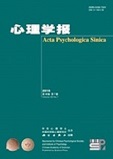|
|
Enlightenment values of Erich Fromm's humanistic psychoanalysis
GUO Yong-yu
2022, 54 (2):
205-218.
doi: 10.3724/SP.J.1041.2022.00205
Erich Fromm's humanistic psychoanalysis theory integrated the basic elements of European cultural traditions, including rationalism, humanism, critical attitude, and Messianism. His main work was to analyze the people in his community and the society in which he lived, with the standards of rationalism and humanism and the methods of psychoanalytic psychology, and to explore the ways of achieving the ideal society and realizing human development. The essence of this work is enlightenment. As a humanistic philosopher in the 20th century, Fromm inherited the unfinished business from those enlightenment philosophers in the 17th and 18th centuries and opened up a way to solve the dilemma of existence debated by his contemporaries, which, in turn, helped modern people overcome the inertia of human nature (i.e., regression toward a child state) and move toward rationality and independence. Grounded in the sense of insecurity that modern people experienced, Fromm deeply analyzed the pathological mechanisms of authoritarianism, nationalism, and consumerism, and suggested a social reform program based on the principles of humanism.
As mentioned, Fromm profoundly analyzed the psychological mechanisms and the consequences that modern people relied on to alleviate or even eliminate their sense of insecurity by embracing authoritarianism, nationalism, and consumerism. Those behaviors and the underlying psychological constructs are seemingly becoming more serious nowadays, which highlights the depth and foresight of Fromm's theory. Inspired by his theory, researchers have conducted empirical studies on the relevant topics in Fromm's psychology. The findings of those works provide new evidence supporting Fromm's theory that the enlightenment values of his humanistic psychoanalysis are still practically significant for the solution to the challenges to human development in the 21st century.
In his 40-year academic career, Fromm demonstrated how clearly and steadily his social values and personal academic missions were. Given his contributions, Fromm should be considered an enlightenment scholar. According to Immanuel Kant, enlightenment is defined as “man's emergence from his self-incurred immaturity.” It is so convenient to be immature! Enlightenment requires that we know what we don't know, discover what we haven't discovered, exercise the right to criticism without any constraint, endure the loneliness of independence, and then think of ourselves as mature and responsible human beings. Only if the perfectibility of man indicated by philosophers exists and only if we human beings have room to improve will enlightenment continue to play its role in people's self-realization and function as a premise of human development. Whether an independent person or human beings at large, self-growth never ends on one hand, and to overcome the regressive inertia of human nature never ends on the other. As long as this conflict exists, the task of enlightenment will never be completed, and, in this regard, Fromm's humanistic psychoanalysis theory will continue to inspire people with its unique values and perspectives.
Related Articles |
Metrics
|




